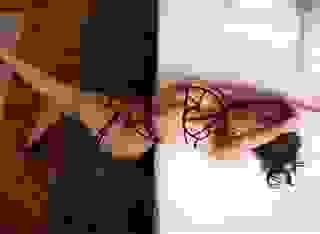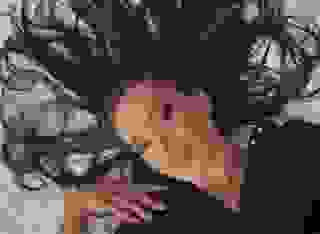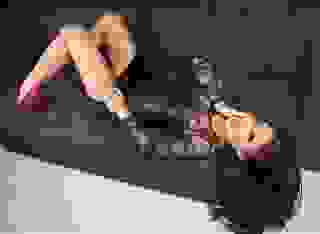- How To
- Valuing Books
Note: You can change font size, font face, and turn on dark mode by clicking the "A" icon tab in the Story Info Box.
You can temporarily switch back to a Classic Literotica® experience during our ongoing public Beta testing. Please consider leaving feedback on issues you experience or suggest improvements.
Click hereOggbashan's Advice: Is this book valuable?
This was written for charity shops selling books in the UK but can have some application elsewhere.
A secondhand book has NO value unless somebody wants to buy it.
1. Books that have NO value
Readers' Digest Condensed Books and Mills and Boon paperbacks can soon swamp the largest shop. There are buyers for pristine Mills and Boon at but they can take up space better used for other books.
A book may be a pristine first edition signed by the author but if the book is unreadable or just plain bad no one will want it even at 10p.
Obsolete reference books are the worst. Last year's law books however impressive looking do not have a market except as furniture. A ready reckoner for pre-decimal currency is just waste paper.
Text books lose value as soon as they are superseded and don't regain any value until they are old enough to be quaint.
Battered children's books are useless.
Out-of-date factual children's books, unless old enough to be of historic interest, should be rejected.
2. Books that have a standard value
Clean paperbacks and modern dust-wrappered hardbacks can be priced at a basic rate of currently 50p each or three for £1.
3. Books that might be worth more
Some books are obviously valuable, for example large detailed Art books about a specific artist, profusely illustrated and academic. Even so, the condition is important. If the book has lost its dustwrapper, or is stained or internally damaged, it will have lost some of its value. The most expensive books can still be valuable even when damaged.
3.1 Valuable paperbacks.
There are very few valuable paperbacks. The early Ian Fleming's James Bond books, such as Casino Royale, are very expensive in hardback, so the paperback firsts are valuable. That is partly because of the artwork on the cover but mainly because the James Bond franchise still produces films. While Bond films continue to be made, Bond books will be valuable. A good condition paperback first of Casino Royale should sell for £25 to £50.
Early Penguin paperbacks, the ones with three equal size bands, have a value IF they are first edition Penguins and it are in good or sound condition. Depending on their rarity/desirability early Penguin Firsts in good condition could be £3-£5 each. However Penguin has produced modern replicas of their first books and they have no real value.
Collectors' paperbacks are spin-offs from films or TV series e.g. Dr Who. They have value, not as books, but as collectable items that fit the theme. Some rare ones can have considerable value BUT fashions change quickly. What was collectable a couple of years ago can be valueless now e.g. Teenage Ninja Turtles.
Science Fiction paperbacks by popular authors, particularly US printings, can be valuable.
1950s/60s paperbacks such as Pan, Panther, can have a value because of the cover artwork. Again the condition is important. Value can be £2-£25.
Earlier paperbacks, Hodder and Stoughton Yellowbacks, Victorian "shockers", garishly covered novels etc. do have a value as curiosities. In excellent condition could be £30. Sound condition? £10.
The only paperbacks that have a significant value are the 19th Century partworks that were the genuine First Editions of Dickens' novels. A complete set of the loose parts of one of Dickens' novels could be worth hundreds of pounds -- but beware -- The University of Kent at Canterbury produced a reprint of the six parts of Edwin Drood in the 1970s. That reprint is worth £8-£10.
3.2 Old Books
Any book older than 1800 has a greater value than a standard book.
Any book older than 1700 should have a value of at least £25.
Any book older than 1600 should have a value of at least £100.
Any book older than 1500, or even a single page of such a book, is classed as an "Incunabule", plural "Incunabula" and should be on an international register of such books/pages. Any found should have been recorded with details of the previous owner(s) and the source because unknown incunabula need to have a provenance.
19th Century books, that is ones printed between 1800 and 1899 can be valuable but many from the later part of the century are just reprints of earlier works. For example Defoe's Robinson Crusoe in a late 19th Century edition could be valuable if it was originally an expensive book perhaps with many illustrations or worthless if a cheap reprint that is difficult to read.
4. Dating books.
The date of a book is usually shown on the title page or on the back of the title page. In very old books or many Reader's Digest Books it is shown on the back page.
Some dates are shown in Roman numerals.
M = 1000; D = 500; C= 100; L= 50; XL = 40; LXXXX = 90
X = 10; IX = 9; VIII = 8; VII = 7; VI = 6; V = 5; IV = 4
III = 3 ; II = 2 ; I = 1
But 9 may be shown as VIIII ; 40 as XXXX ; 90 as XC.
Some examples:
MDCCCLVIII = 1858
MMV = 2005
MDCCCXCXLV = 1895
Accurately dating a book can be difficult and can require knowledge.
A book may state "First published 1897" but could be a 1950s reprint.
A book may state "First edition thus 1950" but could just be a cheap edition of a much earlier book.
A book may state "First published in the UK 1960" but the original first edition was published in the US in 1955.
5. First Editions
Some books never have more than a first edition and may never be valuable because the author is incompetent or unreadable.
Some first editions are produced in such quantities that they are no more valuable than another edition e.g. second and subsequent Harry Potter books.
A few first editions by otherwise collectable authors can have little value e.g Lawrence Durell's TUNC and Ernest Hemingway's second book. Both books were unlike their other books and were, and are, unpopular.
Some first editions by authors you have heard of aren't as valuable as you might think. Rudyard Kipling is one. He is sometimes in favour, sometimes out of favour. A Kipling first edition printed in the UK is probably worth no more than £8 to £10. Many first editions are worth less than the modern paperback reprint. Buying books as an investment requires very careful judgement.
Modern publishers, and some older publishers, have made the task of finding out whether a book is a first edition very complicated.
Modern Firsts
For example: Many books say "First published 1987" but underneath, or on the back of the title page is a list of numbers like these:
135798642 or 123456789 or even 31 33 35 37 39 38 36 34 32 30 or 31 32 33 34 35 36 37 38 39
As the book is reprinted a number will be dropped from the sequence so a book with the numbers
57986 is actually the FIFTH edition or FIFTH printing.
With 3456789 is the THIRD edition or THIRD printing.
The books with numbers in the 30s are from the THIRTIETH edition.
Older Firsts
Anything that says 10th thousand; 30th thousand -- is NOT a first edition.
Even apparently identical books can be true first editions, or later states of the first edition. One of Charles Dickens' Christmas Stories "The Haunted Man" has four states of the First edition. They can be told apart by the address of the publishers, which changed, and by a misprint on one page of the REAL first. The value of each is different.
The usual order of priority of book states is:
Any edition dedicated by the author to someone related to the book's origin e.g. Ian Fleming's Thunderball dedicated to the Golf Professional at Royal St George's golf course thanking him for help with the golf scenes. That is valuable even in battered condition.
- 1st Edition in dustwrapper signed by author
- 1st Edition in dustwrapper
- 1st Edition without dustwrapper
- 1st Illustrated Edition
- Any edition signed by author
- Other publishers edition after 1st in dustwrapper
- Paperback
- Any edition without dustwrapper.
- Book Club Edition in dustwrapper
- Book Club edition without dustwrapper
BUT condition is important - a battered 1st may be unsaleable while a clean Book Club Edition could be acceptable.
6. Book Buyers
6.1 Most people who buy books buy them to read.
Seems a statement of the obvious? It is true for most of the people who will come into a book shop. If they are not buying books to read themselves they might be buying for a friend or relation to read. Probably 90% of those coming into a bookshop are buying books to be read.
6.2 People who buy First Editions don't always read them
A First Edition has value because it is a First Edition and its value depends on its condition. An ideal First Edition has a perfect dustwrapper around a perfect book and has never been read. Reading a First Edition would devalue it by opening the pages and loosening the spine. A First Edition is an object to be appreciated, NOT a book to be read. If the First Edition owner wants to read that book, they would probably already own a later edition or a cheap paperback reprint.
6.3 People buy books as status symbols
Coffee table books and expensive Art Books are often bought to display, not to read. They are items of furniture to give the impression that the owner is cultured and up-market.
Old leather-bound books can be bought as decoration, to furnish a room. There is a picture of the Duke of Windsor in his Paris apartment after the Abdication, posed against a wall of books. The photograph is so clear that the book titles can be read. The books are obviously arranged by size, not subject, and have expensive bindings but are titles such as "The Transactions of the Society of Accountants 1927-8" next to four volumes of the Bible in French and bound copies of The National Geographic. The size and bindings match but there is no other logic to the arrangement of books.
The same thing can often been seen when people are interviewed on television. Behind them is a wall of books to show how erudite they are. Some of those interviewed are in front of their own collection so the books are sorted by class and type. Others just have a random selection of books just for their looks as wall decoration.
7. Book Condition
There are several ways of describing a book's condition. They don't matter unless you are selling over the internet. A buyer walking into your shop can be expected to judge the book's condition themselves.
However if there are faults in the book that might not be visible to someone picking the book up it is a good idea to write (with a 2B pencil) some comment such as "Page 23 torn"; "scribbling on page 42" or at worst "As Is" which means with all its faults.
Here is a list of normal conventions for book condition. The book is described first then, after a /, the dustwrapper if present.
Mint/Mint -- As delivered by the publisher and not handled. This state is very unusual
Fine/Fine -- As it would appear when new on the new bookseller's shelf
Very Good/Very Good -- shows slight signs of being opened and read
Good/Good -- Most secondhand booksellers won't stock anything worse than this unless the book is rare. The book and dustwrapper show signs of wear and the book has obviously been read many times.
Fair/Fair or Reading Copy -- A sound edition of the book, complete without loss or major damage.
Hospital Copy -- a book only suitable for rebinding or to combine with another copy to make one sound complete copy for example by using the plates. However some hospital copies can be MORE valuable than a better copy if the plates are worth framing. There is a book about Walmer and Deal that has 14 pictures/plates in it. As a complete book it is worth about £100. If it is a hospital copy that no one would mind pulling apart, 12 of the 14 plates can be sold at £30 to £40 each unmounted!
The older the book, the more latitude is allowed on the condition description. Any book more than 50 years old that looks nearly new could be valuable because few books survive like that.
8. What you should look out for
8.1 Hardbacks with good dustwrappers
Any hardback before 1975 that has a good dustwrapper needs a second look. Any before 1960 should be put aside to check with your local expert or on-line. Any 1st edition with dustwrapper before 1975 probably has a value.
8.2 Expensive books
Any book that was obviously expensive when new should be examined. The quality of the binding, printing and/or illustration might make it valuable.
8.3 The "different" book clubs
Crime Club was often the first edition for detective novelists such as Agatha Christie. Her early Crime Club novels can be VERY valuable.
Folio Society: The average Folio Society book in good condition ,particularly in its slipcase, is worth at least £8. Some early ones are worth far more. IF you ever see their printed book collection which comes in a case containing loose sheets from old books you have made a reasonable win on the lottery at £500 plus.
8.4 Specialist Transport/Maritime Books
A picture book about steam trains in general isn't worth much. The more obscure the railway subject, the more valuable the book tends to be so "Private Owner Wagons on the Barry Railway in the 1920s" could be worth checking. Maritime/Shipping are similar. The history of the Royal Navy isn't valuable unless early. A book about Battle-class destroyers could be. Edward Heath's Sailing isn't valuable. It is said that an unsigned copy is rarer than one signed by him.
8.5 Art Books
Art books work like transport. Scholarly illustrated books on a single artist, particularly if produced for a major retrospective of the artist's work, can be from 10 to 100 pounds. Coffee table books with smallish pictures are just normal stock. Catalogues for Sales of a single artist's work can be valuable -- or not -- it depends on the illustrations and the competence of the text.
8.6 Older books
Any book printed (not originally published but printed) before 1900 deserves a second look. A cheap reprint of a classic in poor condition might be worth less than a modern paperback but any book that is typical of its age, or a product of its age, could have value.
Anything printed before 1850 is likely to have a value simply because of its age, apart from the author's name or title.
8.7 Foreign language
It can be very difficult to value a book printed in a foreign language particularly if you can't understand a word of it. Remember that some languages such as Japanese, Chinese, Hebrew and Arabic start at the back, not what we think is the front. There might be a few English words on the title page.
9. Anyone can find the valuable books. There is no rule that says the valuable books will be in the antique book shop.
10. Where to seek advice
Look at www.abebooks.co.uk or www.abebooks.com or ask me by PM. My advice is free to Literotica members.
April 2009 revised for Literotica February 2015
- COMMENTS
I might argue that older textbooks might be worth something, though this depends on the book's contemporary academic quality. I have also found that, at least in America, textbooks have become, in terms of educational value, worse and worse. This is especially true in history and related subjects.
An article that should be salable. Been out of the used and antiquarian game for 30 years, so I learned something. Always page through your purchases, you never know what was stashed in a book. A reading copy of Robert Ruark's "Something Of Value" had enough big bills in it for a ski trip to Colorado..
Chinese books do not "start at the back, not what we think is the front."
Modern Chinese is in exactly the same left-to-right, front-to-back as English.
Traditional Chinese could be written right-to-left, or top to bottoom, but its books still went front-to-back as in English..
I've learned most - MOST - of what you had to say the hard way.
An old colonial - known to us Yanks as Ben Franklin - said that "Experience keeps a dear school, but fools learn in no other."
I hope that my fellow Literotica readers will read and pay attention. *****
wish i'd known this twenty/thirty years ago. when i'd order boxes of books from the old Barnes & Noble seconds.








